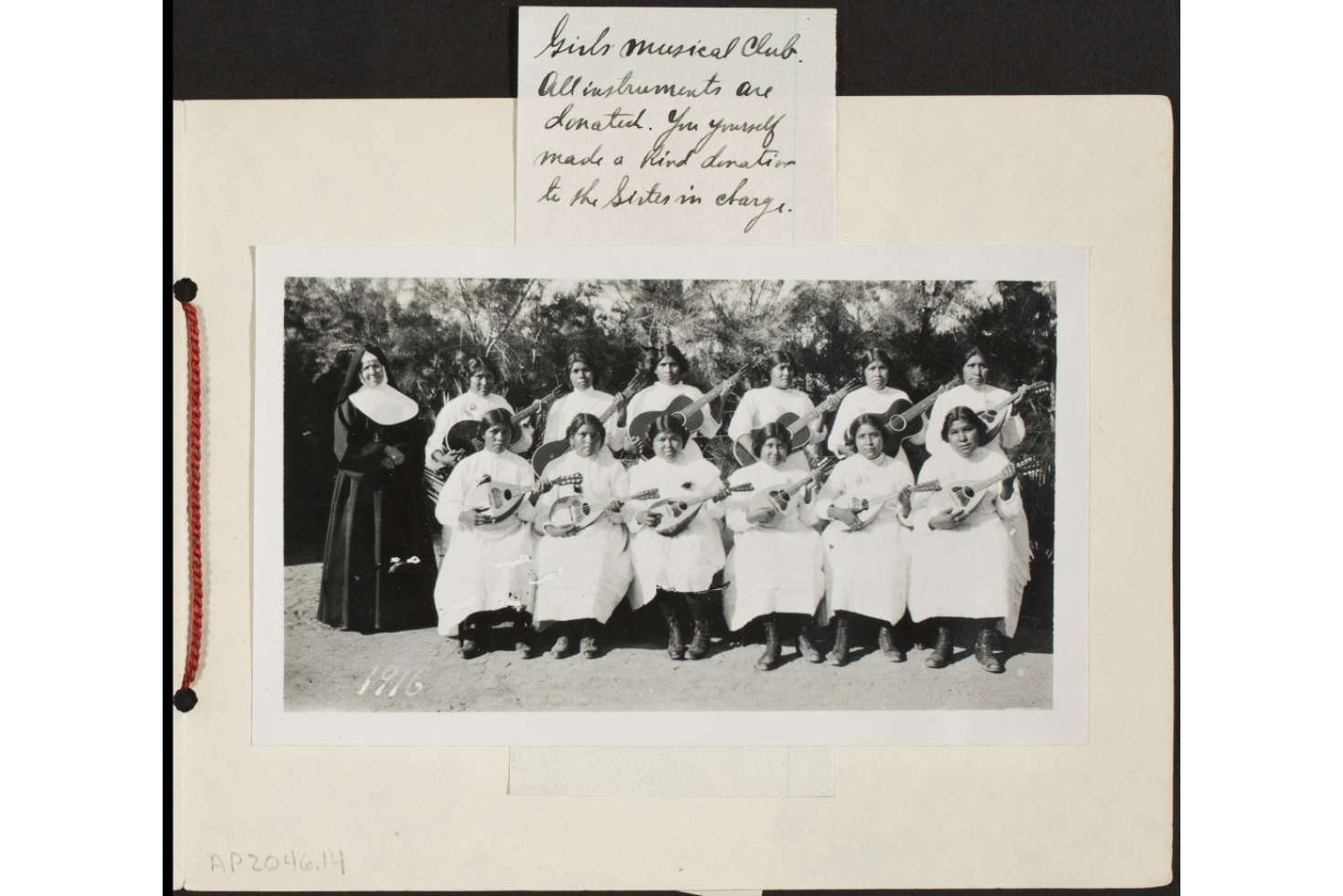While browsing the “American Indian Histories and Cultures” database, I came across this picture:

“Girls musical club”. Photograph. 1916. From American Indian Histories and Cultures. St. John’s Mission photographs.
This picture is of the “Girl’s Musical Club” of the St. John’s Mission. The picture was taken in 1916. I noticed quite a few interesting things about this picture, notably the instruments the girls are holding (lutes and guitars), and the caption on the top of the photograph. It reads as follows:
“Girl’s musical club. All instruments are donated. You yourself made a kind donation to the Sisters in charge.”
And immediately I had more questions than answers. Who is this caption addressing? What is the girl’s musical club? Who made the donations and why? Who wrote this caption?
I did some digging, and found a bit of information. According to the Arizona Memory Project1, the St. John’s mission was located in Komatke Arizona, on the Gila River Indian Reservation. It did not appear to be hugely long-lasting or successful, but seemed to value a Western music education as important. In fact, after her appointment to missionary teacher, Mrs. Stout wrote a letter that drew attention to this fact. In 1872, she said,
“Let me thank you for sending us the organ and things for the children…The organ is such a nice one and pleased the children so much. It will be a great comfort to us also, for I don’t know what it is to live without some kind of a musical instrument…2“
It seems that the St. John’s Mission education recognized the innate human need for music. However, in the research I did, I found no discussion or report of Indigenous music from the missionary’s perspective. In the future, I think it would be interesting to try to locate sources that explicitly talked about Indigenous music from white people (especially missionaries’) perspective.
One thing that made this particular photograph initially interesting to me was not only the photograph itself, but the handwritten caption that goes along with it. To try to figure this one out, I generalized my research focus to try to find out about who would’ve donated instruments to schools or missionaries. Unfortunately, after many databases (including plain old Google), many search terms and phrases, and lots of frustration, I was unable to find much concrete evidence about this. My best inference is that these instruments were donated by either wealthy patrons/supporters of the missions, or were made cheaply for the express purpose of being a “school instrument”. I think the instruments were mass-manufactured (factory-made) in some way, because they all appear fairly similar, with the same body shapes, colors, and details.
It is still unclear to me who might’ve written this note and to whom it was addressed, and I want to try to do some more digging into this (look forward to my last blog post!).
While I still have many questions, one thing that is clear to me is the importance of music education to missionary schools, which also points to the high value white Europeans still placed on music even when they were geographically elsewhere.
Works Cited:
[1] “St. John’s Mission, Komatke, Gila River Reservation, AZ: Papago Indian Children.” Arizona Memory Project. https://azmemory.azlibrary.gov/digital/collection/asufras/id/170.
[2] “Among the Pimas, or, the Mission to the Pima and Maricopa Indians – American Indian Histories and Cultures”. Adam Matthew (Digital).” 1893. https://www.aihc.amdigital.co.uk/Documents/Details/Ayer_267_P81_A52_1893.
